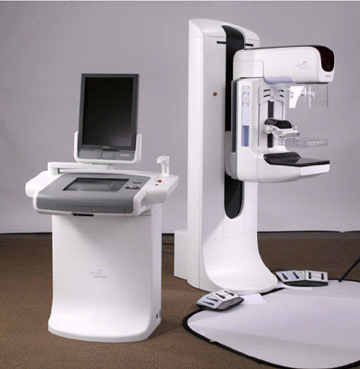We’ve been saying this for a while now: Mammograms simply don’t crack it when it comes to saving lives.
In fact, studies have shown that for every 2,000 women over the age of 50 who are screened every year for a decade with this archaic and painful screening method, approximately one breast cancer death is avoided.
Call me crazy, but that hardly sounds like an effective method of breast cancer detection… despite what the mainstream may try to claim to the contrary.
Dividing the camp
It’s tempting to say, ‘we told you so’ or ‘they had it coming’. Either way, it seems that finally the message is getting through to some at least in the mainstream.
Previously, I told you about a British Medical Journal article in which two Dartmouth professors wrote that the benefits of mammograms are exaggerated and that the harmful effects of this procedure are ignored.

Of course, they were talking about the risk of radiation exposure and breast compression, which can prompt the growth of existing tumours.
In another study, researchers looked at more than 30 years of breast cancer and mammogram data and came to two clear conclusions…
- Early detection of breast cancer does not lower the rate of advanced cancers.
- Doctors misdiagnosed more than one million women during the study period.
Now, a new study, published in the Journal of the Royal Society of Medicine, suggests there is no evidence that screening women for breast cancer has an effect on mortality.
The researchers studied 20,000 medical records which listed breast cancer on the death certificate, along with general data for England on deaths where breast cancer was specifically marked as the underlying cause.
The researchers argue that if the mammogram screening programme had been responsible for lowering death rates, they would’ve expected to see the largest decrease among women who had been offered at least one screening test.
Instead, they found the greatest decline in breast cancer deaths were in women under 40, among whom deaths decreased by two per cent per year from 1988-2001, and five per cent a year from 2001-2009. The women in this age group are not likely to have been offered mammogram screenings.
Among women aged 50-64, who would have been offered screenings, the decrease in death rates was 1.2 per cent during the first period and three per cent during the second.
H Gilbert Welch, professor of medicine at Geisel School of Medicine in New Hampshire, and an expert in breast cancer screening, said: “This study shows the same thing we see in the US — the mortality declines are greater in younger women who are not exposed to screening. To me, that means that the benefit that is there – and there probably is some — is much smaller than we have been led to believe. I think the truth is that screening doesn’t find the cancers that are needed the most.”
I could not have said it any better.
Then, there’s also the risk of over-diagnosis, which means unnecessary biopsies, surgeries and other treatments. In fact, a recent study showed that one in three women are being over-diagnosed, leading to thousands of women being treated for cancers that are not life threatening. Adding to that, research from the University of Copenhagen in Denmark shows that the psychological damage from a false-positive mammogram result can stay with you for years.
Still, there are some in the mainstream who won’t budge despite the evidence mounting against mammograms.
Prof Julietta Patnick, director of the NHS Cancer Screening Programmes, said: “The NHS Breast Screening Programme plays a key role in detecting breast cancer at an early stage, which gives women the best chance of successful treatment.”
The only problem is, Prof Patnick, the NHS screening programme only offers mammograms as a way of detecting breast cancer. If the NHS also offered other effective screening methods like thermography and Automated Breast Ultrasound System (ABUS), then women would actually have a choice and a better chance of getting the best and most successful treatment. Both these screening methods show a high rate of accuracy, and they don’t compress the breasts to a pulp or expose women to high levels of radiation.
From The Daily Health. 12th June 2013